Leprosy drug clofazimine activates peroxisome proliferator-activated receptor-γ and synergizes with imatinib to inhibit chronic myeloid leukemia cells
- PMID: 31371410
- PMCID: PMC7109729
- DOI: 10.3324/haematol.2018.194910
Leprosy drug clofazimine activates peroxisome proliferator-activated receptor-γ and synergizes with imatinib to inhibit chronic myeloid leukemia cells
Abstract
Leukemia stem cells contribute to drug-resistance and relapse in chronic myeloid leukemia (CML) and BCR-ABL1 inhibitor monotherapy fails to eliminate these cells, thereby necessitating alternate therapeutic strategies for patients CML. The peroxisome proliferator-activated receptor-γ (PPARγ) agonist pioglitazone downregulates signal transducer and activator of transcription 5 (STAT5) and in combination with imatinib induces complete molecular response in imatinib-refractory patients by eroding leukemia stem cells. Thiazolidinediones such as pioglitazone are, however, associated with severe side effects. To identify alternate therapeutic strategies for CML we screened Food and Drug Administration-approved drugs in K562 cells and identified the leprosy drug clofazimine as an inhibitor of viability of these cells. Here we show that clofazimine induced apoptosis of blood mononuclear cells derived from patients with CML, with a particularly robust effect in imatinib-resistant cells. Clofazimine also induced apoptosis of CD34+38- progenitors and quiescent CD34+ cells from CML patients but not of hematopoietic progenitor cells from healthy donors. Mechanistic evaluation revealed that clofazimine, via physical interaction with PPARγ, induced nuclear factor kB-p65 proteasomal degradation, which led to sequential myeloblastoma oncoprotein and peroxiredoxin 1 downregulation and concomitant induction of reactive oxygen species-mediated apoptosis. Clofazimine also suppressed STAT5 expression and consequently downregulated stem cell maintenance factors hypoxia-inducible factor-1α and -2α and Cbp/P300 interacting transactivator with Glu/Asp-rich carboxy-terminal domain 2 (CITED2). Combining imatinib with clofazimine caused a far superior synergy than that with pioglitazone, with clofazimine reducing the half maximal inhibitory concentration (IC50) of imatinib by >4 logs and remarkably eroding quiescent CD34+ cells. In a K562 xenograft study clofazimine and imatinib co-treatment showed more robust efficacy than the individual treatments. We propose clinical evaluation of clofazimine in imatinib-refractory CML.
Copyright© 2020 Ferrata Storti Foundation.
Figures
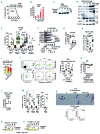
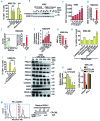

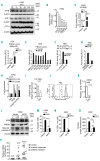


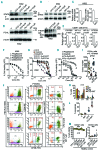
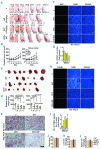
Similar articles
-
Increased peroxisome proliferator-activated receptor γ activity reduces imatinib uptake and efficacy in chronic myeloid leukemia mononuclear cells.Haematologica. 2017 May;102(5):843-853. doi: 10.3324/haematol.2016.153270. Epub 2017 Feb 2. Haematologica. 2017. PMID: 28154092 Free PMC article.
-
Persistent STAT5-mediated ROS production and involvement of aberrant p53 apoptotic signaling in the resistance of chronic myeloid leukemia to imatinib.Int J Mol Med. 2018 Jan;41(1):455-463. doi: 10.3892/ijmm.2017.3205. Epub 2017 Oct 20. Int J Mol Med. 2018. PMID: 29115375
-
A novel tubulin polymerization inhibitor, MPT0B206, downregulates Bcr-Abl expression and induces apoptosis in imatinib-sensitive and imatinib-resistant CML cells.Apoptosis. 2016 Sep;21(9):1008-18. doi: 10.1007/s10495-016-1264-z. Apoptosis. 2016. PMID: 27344662
-
[MET/ERK and MET/JNK Pathway Activation Is Involved in BCR-ABL Inhibitor-resistance in Chronic Myeloid Leukemia].Yakugaku Zasshi. 2018;138(12):1461-1466. doi: 10.1248/yakushi.18-00142. Yakugaku Zasshi. 2018. PMID: 30504658 Review. Japanese.
-
Characterization of cancer stem cells in chronic myeloid leukaemia.Biochem Soc Trans. 2007 Nov;35(Pt 5):1347-51. doi: 10.1042/BST0351347. Biochem Soc Trans. 2007. PMID: 17956348 Review.
Cited by
-
Wnt Signaling in Leukemia and Its Bone Marrow Microenvironment.Int J Mol Sci. 2020 Aug 28;21(17):6247. doi: 10.3390/ijms21176247. Int J Mol Sci. 2020. PMID: 32872365 Free PMC article. Review.
-
Phenazine derivatives attenuate the stemness of breast cancer cells through triggering ferroptosis.Cell Mol Life Sci. 2022 Jun 11;79(7):360. doi: 10.1007/s00018-022-04384-1. Cell Mol Life Sci. 2022. PMID: 35690642 Free PMC article.
-
Anti-Cancer Effects of Oxygen-Atom-Modified Derivatives of Wasabi Components on Human Leukemia Cells.Int J Mol Sci. 2023 Apr 6;24(7):6823. doi: 10.3390/ijms24076823. Int J Mol Sci. 2023. PMID: 37047794 Free PMC article.
-
Proteomic analysis and identification reveal the anti-inflammatory mechanism of clofazimine on lipopolysaccharide-induced acute lung injury in mice.Inflamm Res. 2022 Nov;71(10-11):1327-1345. doi: 10.1007/s00011-022-01623-w. Epub 2022 Aug 13. Inflamm Res. 2022. PMID: 35962798 Free PMC article.
-
Clofazimine inhibits small-cell lung cancer progression by modulating the kynurenine/aryl hydrocarbon receptor axis.Int J Biol Macromol. 2024 Dec;282(Pt 3):136921. doi: 10.1016/j.ijbiomac.2024.136921. Epub 2024 Oct 28. Int J Biol Macromol. 2024. PMID: 39490481
References
-
- Prost S, Relouzat F, Spentchian M, et al. Erosion of the chronic myeloid leukaemia stem cell pool by PPARγ agonists. Nature. 2015;525(7569):380–383. - PubMed
-
- Nissen SE, Wolski K. Effect of rosiglitazone on the risk of myocardial infarction and death from cardiovascular causes. N Engl J Med. 2007;356(24):2457–2471. - PubMed
Publication types
MeSH terms
Substances
LinkOut - more resources
Full Text Sources
Medical
Molecular Biology Databases
Miscellaneous

